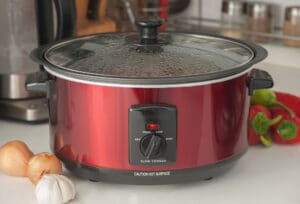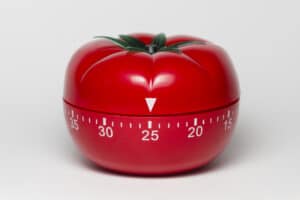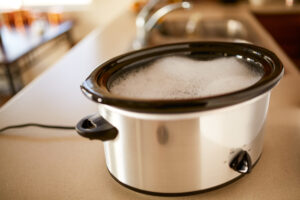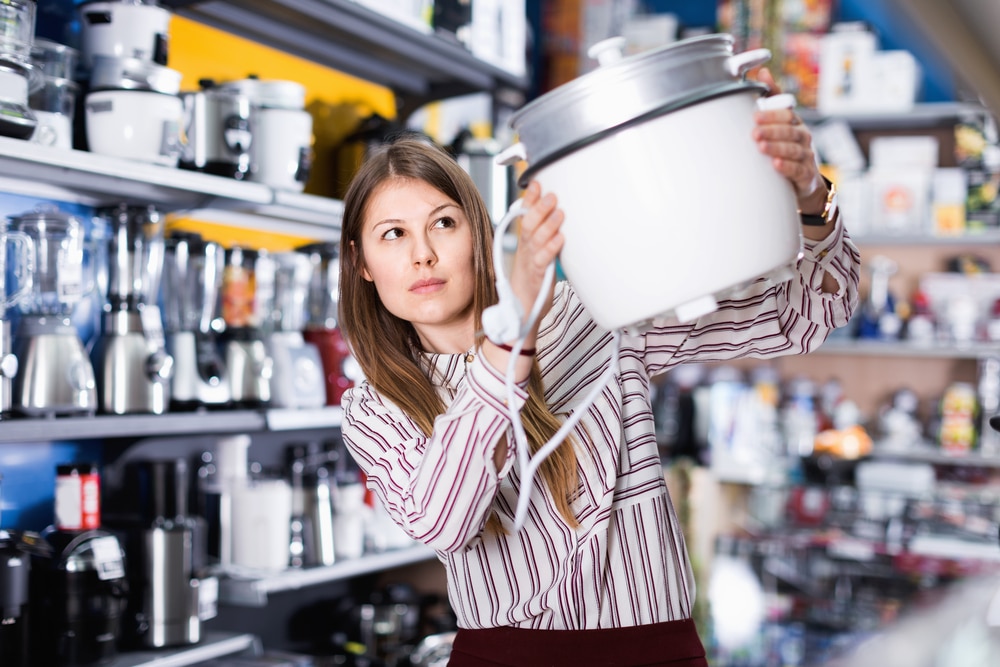If you love trying new recipes but don’t like the effort that can come with cooking, you may find that there are a few kitchen appliances that are quite useful. Pressure cookers, air fryers, multi-cookers, and slow cookers are a few which can make your time in the kitchen more enjoyable and easier for you.
In this article, we look at the main differences between multi-cookers and slow cookers so that you make choose the right one for you.
What Is a Multi-Cooker?
 As the name already implies, a multi-cooker comes with multiple features that can replace many kitchen appliances, such as a fryer, pressure cooker, steamer, and even slow cooker. Through simply changing the device’s settings, you can cook various meals. In an instant, you can boil, bake, stew, steam, and even roast dishes. With all of these food options, you can create great flavours in your kitchen day in, day out.
As the name already implies, a multi-cooker comes with multiple features that can replace many kitchen appliances, such as a fryer, pressure cooker, steamer, and even slow cooker. Through simply changing the device’s settings, you can cook various meals. In an instant, you can boil, bake, stew, steam, and even roast dishes. With all of these food options, you can create great flavours in your kitchen day in, day out.
Pros:
- Highly versatile with plenty of cooking functions so that you can replace other kitchen appliances
- Will keep meals warm for long periods of time, even after cooking, so you don’t have to experience cold dishes
- Cooks food quickly, so you don’t have to wait a long time for your dishes to be ready
- Excellent energy efficiency, so you can cook delicious meals without increasing your electricity usage
- Not limited to one function and is able to slow cook, pressure cook, and even make yoghurt
Cons:
- Can be bulkier than a slow cooker; thus, it’ll take up more space on your kitchen worktop
- Some functions may require supervision – it is sometimes necessary to stir the ingredients and maybe even adjust a couple of settings while cooking
- The fast-cooking process can reduce the ingredient’s flavour
What Is a Slow Cooker?
 As the name suggests, your dishes may take a longer period of time to cook when using this appliance. When using the slow cooking process, the appliance tenderises cuts of meat and enhances the flavour of vegetables, potatoes, gravy, and more; thereby, allowing you to create a delicious range of dishes. These kitchen appliances are safe to use, keep your meal warm for hours, which means that you don’t have to cook right after returning from work.
As the name suggests, your dishes may take a longer period of time to cook when using this appliance. When using the slow cooking process, the appliance tenderises cuts of meat and enhances the flavour of vegetables, potatoes, gravy, and more; thereby, allowing you to create a delicious range of dishes. These kitchen appliances are safe to use, keep your meal warm for hours, which means that you don’t have to cook right after returning from work.
Pros:
- Locks in the natural flavours of dishes to reveal great-tasting ingredients
- Reduced odour, so you can cook dishes all day long without an overwhelming smell in your home
- Doesn’t require any supervision during cooking time, enabling you to leave your ingredients in the pot, which is great if you’re out working all day
- Burning food in a slow cooker is virtually impossible. Cuts of meat can have a slightly dry texture, but the heat won’t overcook ingredients
Cons:
- You have to plan your meals in advance, and you can’t add ingredients at the last minute to a slow cooker
- It only has one function, so you don’t have various programmes to choose from in comparison to a multi-cooker
- Ideally, you should use fresh ingredients; canned and frozen vegetables can become tasteless and watery in a slow cooker, which can ruin your recipes
- If vegetables sit in a slow cooker for long periods, they can lose their nutrients. If you’re trying to maximise your vitamin and mineral intake, you might be disappointed that a slow cooker won’t help
- No ideal for making recipes with beans. This is because beans contain a toxin called phytohaemagglutinin. Therefore, you have to cook these ingredients at high temperatures before eating them. Unfortunately, a slow cooker can’t get hot enough to do this, so you have to boil beans before adding them to the slow cooker
Multi-Cooker vs Slow Cooker
 If you’re still wondering what the differences between a slow cooker and a multi-cooker are, we have looked at some of the main characteristics and functions to help you decide which is best for your kitchen.
If you’re still wondering what the differences between a slow cooker and a multi-cooker are, we have looked at some of the main characteristics and functions to help you decide which is best for your kitchen.
Functions of Each Appliance
A slow cooker only has one function: to slow cook food. Feel free to cook a variety of dishes in a slow cooker; however, you do not have the option of changing the cooking process. Each manufacturer offers various functions and capabilities with some boasting more safety features than others.
On the other hand, a multi-cooker combines the functions of various kitchen appliances into one. With a multi-cooker, you can saute, steam, roast, bake, and more. Often, this versatility makes these appliances the preferred option as it combines several appliances into one.
Liquid Required
When utilising a multi-cooker, make sure you add liquid to your cooking—whether that’s a sauce, gravy, or water. If you don’t use enough liquid, the food can become dry, resulting in a reduced flavour.
Alternatively, you don’t have to add much liquid to your dishes in a slow cooker. In fact, adding too much liquid is a common mistake when cooking in a slow cooker. Unless you’re making soup, you should avoid adding extra liquid. If you do add liquid to all the dishes you make, you might end up with a lot of leftovers. This is because less evaporation takes place in a slow cooker.
Cooking Length
If you don’t have enough time to prepare and cook food in the kitchen, you probably won’t be able to wait for your dishes to completely cook in a slow cooker. In particular, if you want a kitchen appliance that cooks food quickly, opt for a multi-cooker and use the pressure cooker programme. This setting uses high heat and retains moisture to create meals in less time than a traditional oven or when slow cooking. In fact, a multi-cooker can pressure cook a whole chicken in nearly half an hour.
 Alternatively, if you don’t want your food cooking quickly but rather prefer great-tasting ingredients, opt for a slow cooker that cooks ingredients evenly and locks in moisture and flavour. Another option would be to prep food the day before or in the mornings so that you can leave it to cook when you’re at work. That way, when it comes to dinner time, all you need to do is grab the plates and serve.
Alternatively, if you don’t want your food cooking quickly but rather prefer great-tasting ingredients, opt for a slow cooker that cooks ingredients evenly and locks in moisture and flavour. Another option would be to prep food the day before or in the mornings so that you can leave it to cook when you’re at work. That way, when it comes to dinner time, all you need to do is grab the plates and serve.
Supervision
A slow cooker is simple and straightforward. Simply add your ingredients and set the temperature and timer function. After this, you can then walk away and get on with your day without even having to check on your food or stir it. Although, if you want to monitor how it’s getting on, the transparent lid allows you to see the food’s progress at a glance and, of course, you can give it a stir if you feel so inclined.
On the other hand, when you are using certain functions of your multi-cooker, it may not be suitable to leave it unattended. For the pressure cooking setting, it is safer to add the ingredients once you return home from work whereas if you are hoping to make yoghurt or use the slow cook function, it would be safe to leave it to its own devices.
Cleaning After Cooking
 Cleaning up after spending a while cooking in the kitchen can seem like a neverending chore. Fortunately, cleaning a slow cooker is just as easy as cooking with one. Simply fill it with soapy water and then turn the appliance on low for around one hour—or several hours for stubborn marks— to loosen any stuck-on food. Most slow cookers have a non-stick pot, so food will likely easily come off in an instant. You can then pour away this liquid, wipe it dry and store away ready for the next use.
Cleaning up after spending a while cooking in the kitchen can seem like a neverending chore. Fortunately, cleaning a slow cooker is just as easy as cooking with one. Simply fill it with soapy water and then turn the appliance on low for around one hour—or several hours for stubborn marks— to loosen any stuck-on food. Most slow cookers have a non-stick pot, so food will likely easily come off in an instant. You can then pour away this liquid, wipe it dry and store away ready for the next use.
On the other hand, multi-cookers require more work to remove debris particles, and burnt-on marks to keep it free from bacteria. In particular, you’ll have to remove the lid, valve and inner pot. This isn’t great if you want your appliances clean with minimal effort. Plus, there are many nooks and crannies outside of a multi-cooker, making cleaning more laborious and time-consuming. This is why we suggest looking for a model that has dishwasher safe parts. Also be sure to read customer reviews to learn about their experiences.
Capacity
If you don’t cook much in one go, you won’t require a device with a large capacity. In which case, a multi-cooker might be best, because they’re often not as large as slow cookers.
Alternatively, slow cooking in one pot is great for a larger household. This is because its capacity is usually much bigger, enabling you to throw in various ingredients at once. This device is also perfect for making large batches for freezing or meal prep, allowing you to not worry about cooking for a day or a week!
Lid Design
Finally, another difference between these devices is the lid design. In particular, slow cookers feature transparent lids that allow you to see your food as its cooking.
However, a multi-cooker tends to come with a lid that is often heavy, and sometimes bulky or hot to touch. With no transparent design, you can’t glance at your dish in the pot without having to remove it. Therefore, if you want to check on your dish’s progress, you’ll need to lift off the lid to assess. Without an included lid stand, this could become slightly dangerous. The multi-cooker lid is designed to facilitate the pressure cooking process, which requires high heat and pressure to cook your food quickly. In this scenario, you wouldn’t want to remove the lid at the risk of releasing steam and pressure; however, it doesn’t help when using the other programmes where you may need to check on your food.
Which Will You Choose?
 Overall, these appliances boast incredible benefits. If you prefer slow cooking meals and want to come home to ready-cooked meals, we recommend opting for the former. But if you’d prefer the versatility of having more than one way to cook, a multi-cooker offers various settings. A multi-cooker is great for searing, steaming, and much more.
Overall, these appliances boast incredible benefits. If you prefer slow cooking meals and want to come home to ready-cooked meals, we recommend opting for the former. But if you’d prefer the versatility of having more than one way to cook, a multi-cooker offers various settings. A multi-cooker is great for searing, steaming, and much more.
Which device do you think is best for you? Let us know your thoughts in the comments.
Amy is a U.K.-based writer and editor with a penchant for helping consumers find the best home products for their needs, as well as providing easily digestible guides for living better at home. Her dedication to her work means she can usually be found elbow-deep in research or hunting down samples of the latest and greatest on behalf of her readers.
An avid DIYer herself, Amy’s passion lies in teaching others how they too can achieve their dream homes by tackling some of those pesky projects themselves! Whether it’s building furniture from scratch or turning an old dresser into a coffee table, Amy is always happy to share what she knows about making your house feel like home without spending a fortune.

